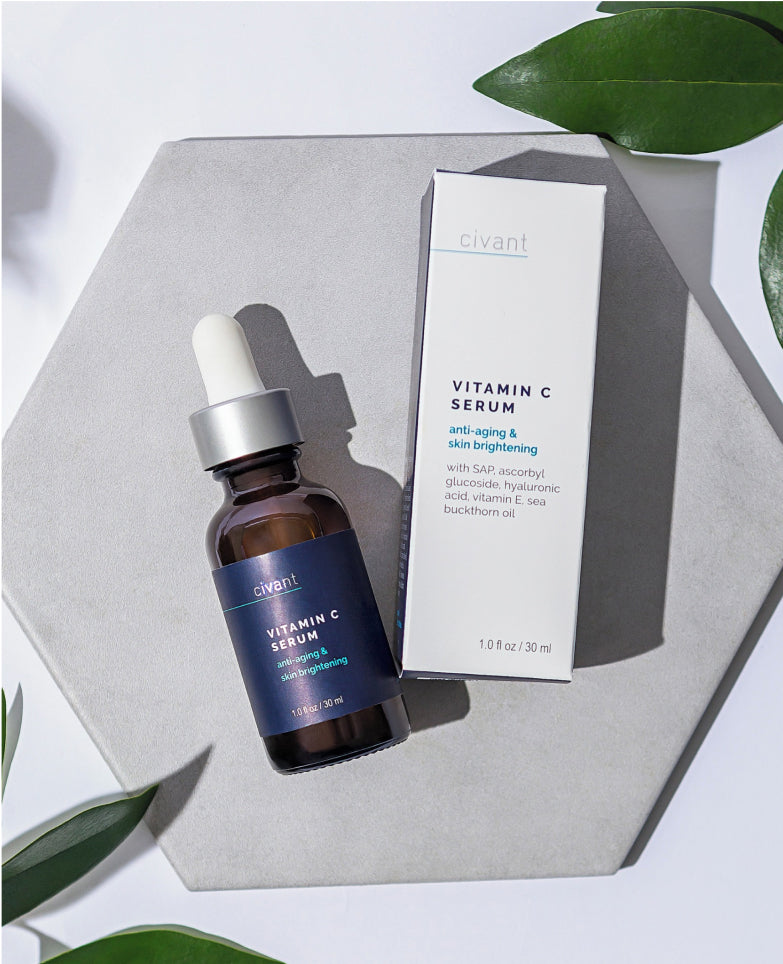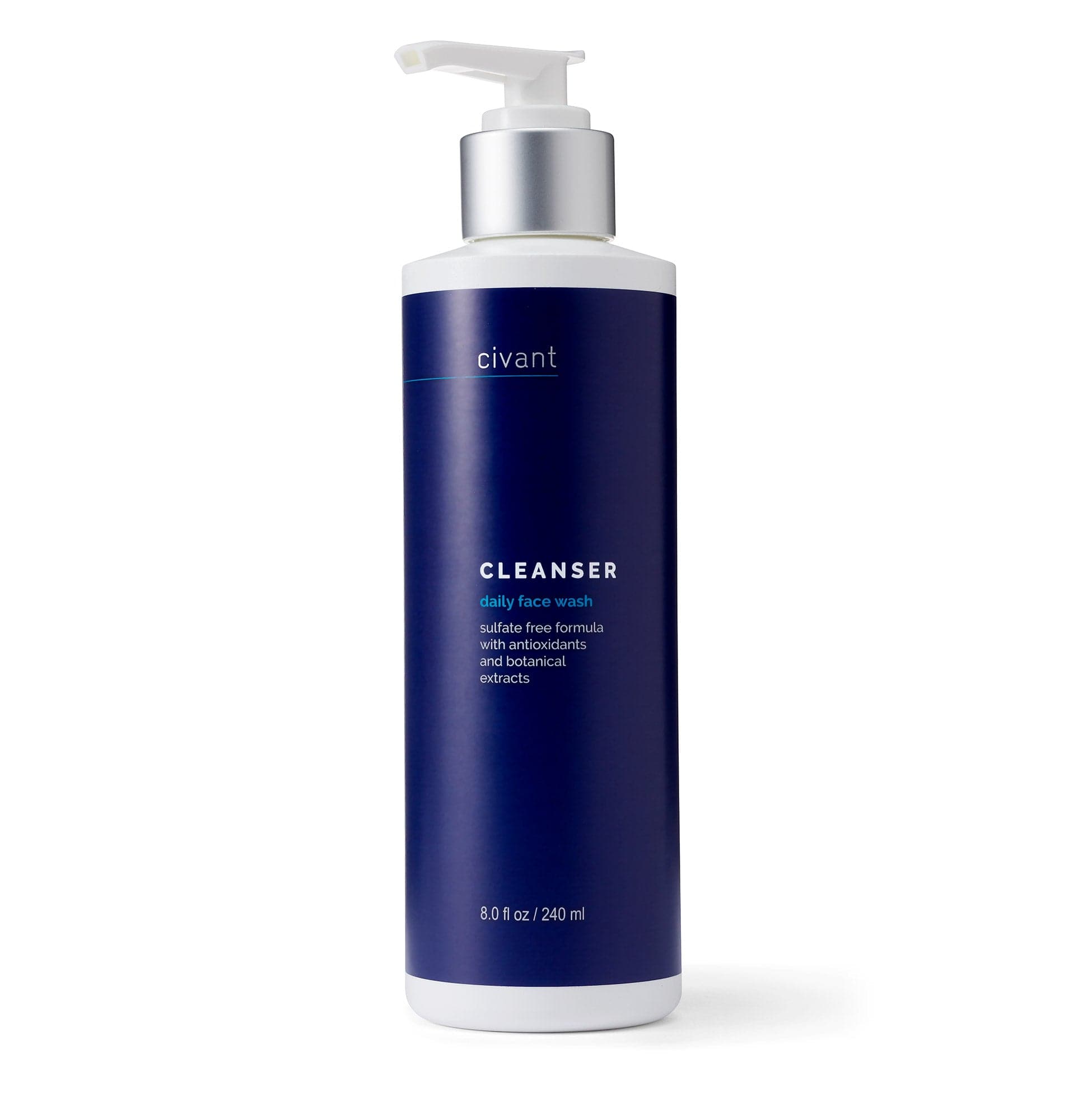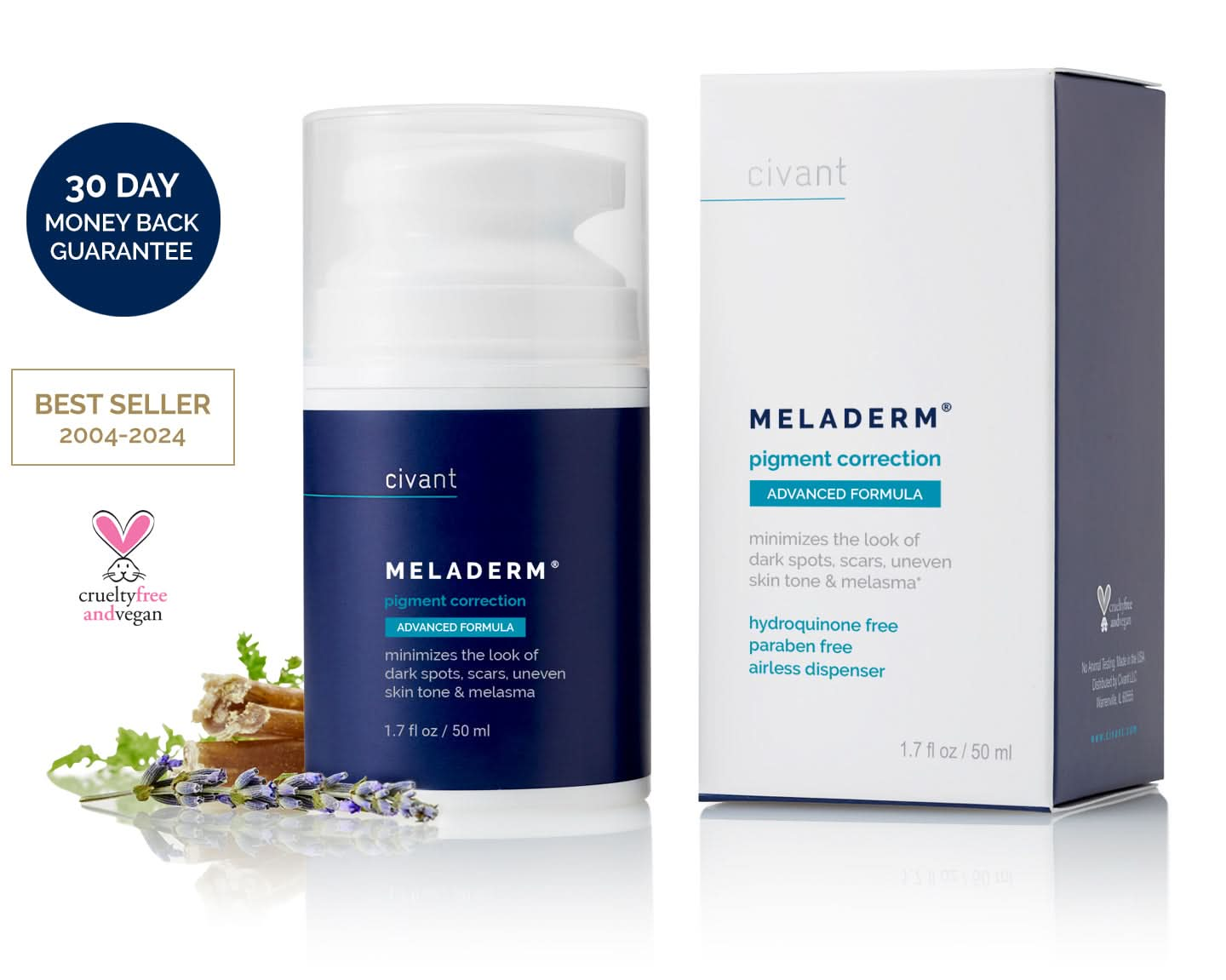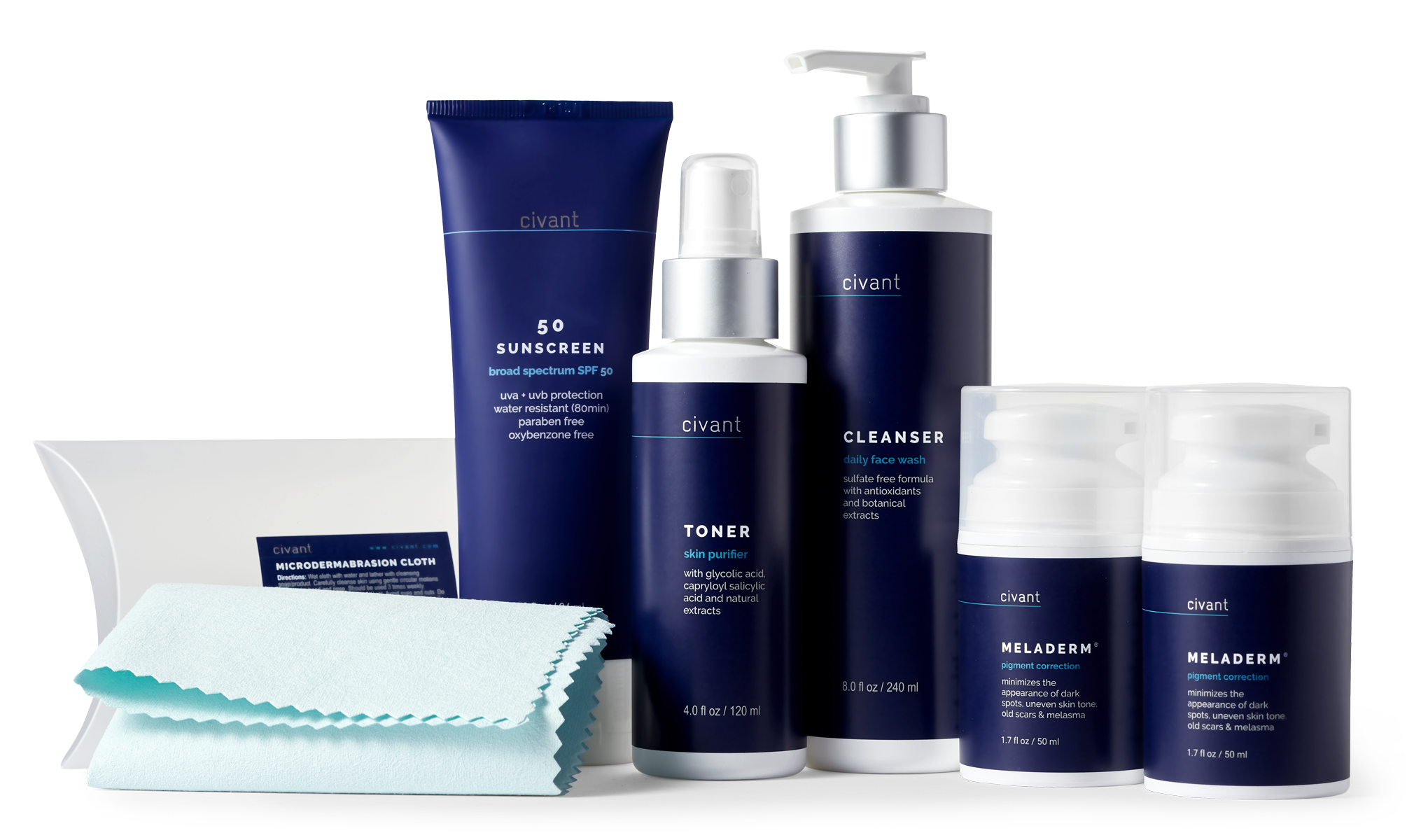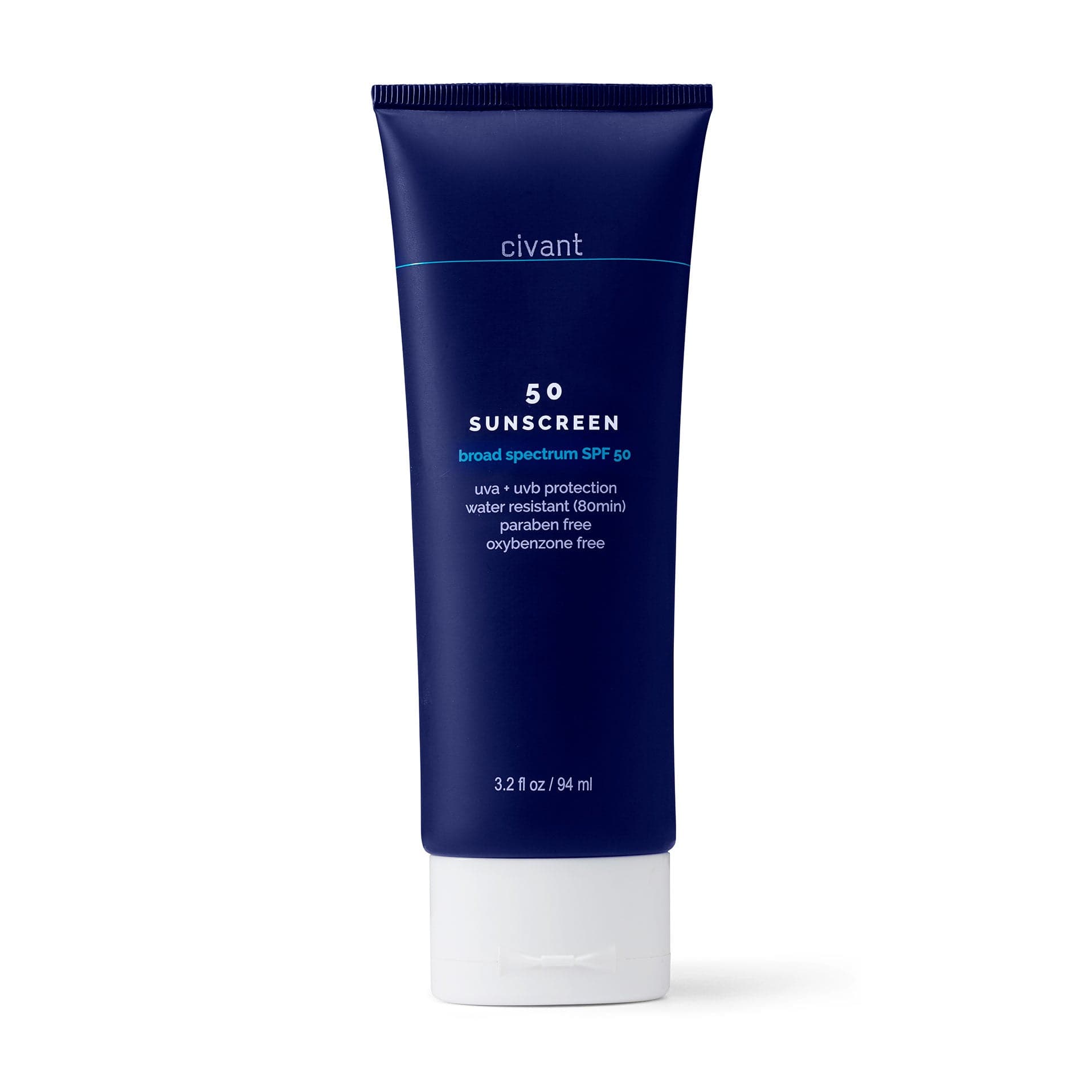Melasma is a type of hyperpigmentation that causes freckle-like dark brown patches to form on your face. It makes you lose your natural skin glow because the affected areas, mostly the forehead, cheeks, upper lips, and bridge of your nose, look blotchy and uneven.
Although melasma is harmless and its treatment is not considered medically necessary, many people prefer to find a solution because of the negative effect it has on their self-esteem and quality of life.
Unfortunately, treating melasma is not easy for a variety of reasons. Sometimes, particularly when it’s triggered by pregnancy or medication, it may fade naturally when you deliver the baby and discontinue the medication. Other times, it can be tricky and stubborn to fade, depending on:
- Your skin tone
- How deep it reaches into your skin
- Its causes or triggers
- The facial location
Tweaking your skin-care routine and good protection from sunlight and other UV sources of light may also help to treat melasma.
Below we discuss the best treatment methods for melasma, which aim to decrease the amount of pigmentation your body produces and even out your skin to restore its natural glow.
Tip 1 - Prioritize Sun Protection

UVA and UVB rays produced by the sun are a common culprit for hyperpigmentation and melasma. The rays damage your skin's DNA and encourage it to overproduce melanin in an attempt to protect itself.
Hence, sun protection is an effective way of preventing melasma caused by UV rays and guarding your skin against sun damage and aging. Some effective ways to protect your skin from the sun include:
- Applying a broad-spectrum mineral sunscreen daily
- Incorporating vitamin C into your daily skincare routine
- Wearing a wide-brimmed hat when going out into the sunSunscreen is non-negotiable in any weather if you are looking to kick melasma to the curb and win back your natural glow. It works hard to protect your skin from further sun damage.
Applying sunscreen every day, despite the weather, will inhibit UV rays from encouraging excess melanin production. This, in turn, will prevent new dark spots from appearing and reduce the likelihood of existing dark spots becoming darker.
Mineral sunscreens with zinc or titanium are very gentle and suitable if you have sensitive skin or are looking to adopt a sustainable beauty routine. Additionally, we recommend using a sunscreen with at least SPF 50 as it blocks up to 98% of UVB rays.
The Civant SPF 50 Sunscreen is a great choice—it works on all skin types and tones and can be used on both your face and body. It's dermatologist-tested, cruelty-free, and completely vegan.
Expert Tip: Ideally, you should reapply your SPF every two hours. That's because a single application is not enough to last a whole day because it does wear off as you sweat and go about your day.
Tip 2 - Invest in Topical Creams

You can fade melasma blotches using prescribed or over-the-counter topical creams. These creams often contain skin-brightening or exfoliating products to help you fade melasma over a number of weeks.
Below are some of the common ingredients found in topical creams for melasma:
- Hydroquinone
- Retinoids
- Topical steroids
- Glycolic acid
- Azelaic acid
- Kojic acid
- Niacinamide
These topicals can be added to your daily skincare routine as they are well tolerated. In fact, topical treatments are the first line of treatment prescribed by many dermatologists.
Meladerm
Meladerm is an effective topical cream by Civant, a skincare brand dedicated to helping individuals combat skin conditions. This topical cream contains 10 advanced ingredients that brighten the appearance of your skin and reduce the signs of melasma quickly. These advanced active ingredients are derived from natural extracts such as bearberry plants, licorice, or mulberry.
It’s also free of undesirable bleaching substances, such as hydroquinone, steroids, and mercury, which could cause severe skin conditions. Hydroquinone is a popular but controversial bleaching agent, citing its potential carcinogenic effects that led to its ban in Europe and proposed ban in the USA back in 2006. Hydroquinone may also lead to hypopigmentation (loss of skin color) and ochronosis (thickening and darkening of the skin). Long-term use could lead to irritation and skin sensitivity.
Meladerm has been helping people diminish the appearance of melasma for over 20 years. Thanks to its synergistic blend of ingredients that include niacinamide, Meladerm helps to fade the look of stubborn melasma and dark spots, restoring your natural skin coloration and glow. When used twice daily, you should start seeing results in 2–4 weeks, which become more noticeable after 2–3 months of consistent use.
“I have struggled with melasma for years. I first developed it after tanning bed overuse. It worsened in pregnancy…Meladern has been amazing. It’s once again almost gone.”
For the best results, you should try our Skin Brightening Kit, which includes products that help you cleanse, tone, and reduce the appearance of dark spots. The kit contains products that are suitable for all skin types and tones. It comes with two bottles of Meladerm to help you diminish the look of dark spots caused by melasma and a tube of SPF 50 Sunscreen to protect your skin and prevent sun damage.
The table below highlights the other products included in the Skin Brightening Kit.
|
Product |
Benefits |
 |
|
|
|
|
 |
|
Tip 3 - See Your Dermatologist for Medical Procedures

In-office dermatological procedures are usually not the first line of treatment for melasma. That's because these can often cause inflammation, which worsens the condition. However, they are an effective supplemental option when topical treatment is not working for you or you suffer from moderate to severe melasma. Your dermatologist is in the best position to recommend any of the treatments based on your skin type, tone, and needs.
Chemical Peels
This procedure involves the application of a chemical solution, such as topical alpha-hydroxy, to remove excess pigment from the skin. A dermatologist applies the chemical peel solution to the melasma and then waits for the outer skin layer to peel off, clearing the melasma spots and blotches. The process also triggers the growth of a new epidermis—the outermost skin layer—free of the hyperpigmentation from melasma.
It's not recommended for cases of dermal melasma—a type of melasma reaching the deeper layers of the skin—because it does not get in deep. Besides, it increases the risk of developing scars and post-inflammatory skin discoloration.
Microneedling
Microneedling is a minimally invasive medical procedure that involves creating microscopic tears in the skin using tiny needles. The procedure breaks blood vessels below the skin surface, increasing blood supply to the pierced area.
The healing of the tiny wounds stimulates collagen and elastin production. This allows your skin texture and appearance to improve by reducing melasma scarring and hyperpigmentation. Microneedling is not 100% effective by itself. Instead, you'll need to complement this treatment with topical skin lightening creams to get the best results.
Laser and Light-Based Therapy
Laser and light therapy is a recommended melasma treatment approach when:
- Topical therapy and chemical peels don't work for you
- You're looking to accelerate your rate of healing
- You're already protecting your skin from the sun
Lasers penetrate the outer layer of the skin, breaking up the existing pigment and triggering cell renewal for brighter, and more even skin.
Light and laser therapy may produce quick and long-term results, but the heat used during the procedures may worsen melasma or cause rebound hyperpigmentation. It's also not safe for people with darker skin types.
Restore Your Glow With Meladerm
The key to fading melasma and restoring your natural glow is consistency. Meladerm, unlike the other topical creams, allows you consistent use in order to fade the blotches and maintain an even skin tone afterward.
Get in touch with the skincare experts at Civant today for more information on the use of Meladerm for melasma. You can also reach out to us for some friendly skin care advice and for help creating the best skincare routine for you.
